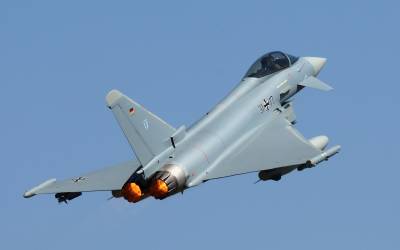KC-135: Old as the hills... (click to view full) DID's FOCUS articles cover major weapons acquisition programs - and no program is more important to the USAF than its aerial tanker fleet renewal. In January 2007, the big question was whether there would be a...
United Arab Emirates (UAE) Articles
F-35 Lightning: The Joint Strike Fighter Program
F-35B: off probation (click to view full) The $382 billion F-35 Joint Strike fighter program may well be the largest single global defense program in history. This major multinational program is intended to produce an "affordably stealthy" multi-role fighter that will...
1st Naval CMV-22B Arrived For East Coast | Norinco Started VN22 6×6 Production | Taiwan Plans To Deploy Hsiung Sheng Missiles
Americas The US Navy’s transition to the CMV-22B Osprey for its long-range and medium-lift aerial logistics missions took a significant step forward on April 5, with the arrival of the first tiltrotor aircraft assigned to the East Coast at Naval Station Norfolk,...
Cochin Shipyard Inked Repair Agreement With USN | UK Delivered Land Rover Parts To Lebanon | South Korea Sent 2nd Spy Satellite To Space
Americas India’s Cochin Shipyard Limited has signed a maintenance and repair agreement with the US Navy. The third Master Shipyard Repair Agreement with an Indian company follows agreements with Larsen & Toubro in 2023 for Mazagon Dock and Kattupalli Port. The US...
Delivery of 1st CE-145C Vigilance to RCAF | Austal Started LCU Construction in Mobile | RAF Eurofighters Arrived in Romania
Americas The US Army Security Assistance Command (USASAC) has a news article on the delivery of the first Beechcraft King Air 350ER, designated CE-145C Vigilance in Canada, to the Royal Canadian Air Force (RCAF) on February 22nd. This marks the initial phase of a...
Eurofighter’s Future: Tranche 3, and Beyond
Italian Eurofighters (click to view full) The multi-national Eurofighter Typhoon has been described as the aerodynamic apotheosis of lessons learned from the twin engine "teen series" fighters that began with the F-14 and F-15, continued with the emergence of the...
Elbit Unveiled Air Keeper | Nigerian Army to Power Vehicles With Natural Gas | Taiwan Frontline Island On Alert
Americas Elbit Systems has unveiled the Air Keeper, a revolutionary airborne system designed to integrate Intelligence, Surveillance, Target Acquisition, and Reconnaissance (ISTAR) capabilities with Electronic Warfare (EW) functionalities on a single platform. The Air...
USN To Test Onboard Microwave Weapon in 2026 | SANDF Seeks To Modernize Samil Trucks | Indonesia Ordered 2 Scorpene Class Subs
Americas The US Navy plans to mount a high-powered microwave-based counter-air defense system prototype on one of its vessels in 2026. The Meteor will be the navy’s first high-powered microwave (HPM) project to counter targets such as drones and anti-ship missiles,...
US Hellfire Missile Orders, FY 2011-2024
USN MH-60S test (click to view full) Hellfire I/II missiles are the USA's preferred aerial anti-armor missile, and are widely deployed with America's allies. They equip America's helicopter fleets (AH-64, AH-1, OH-58D, MH-60S/R), AH-64 and S-70 helicopters flown by...




